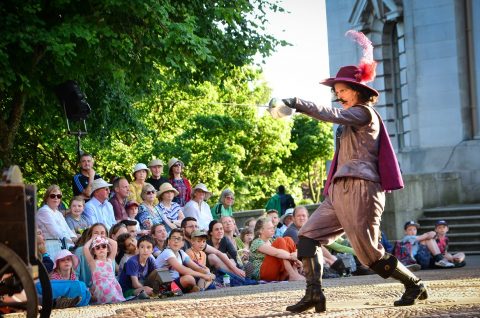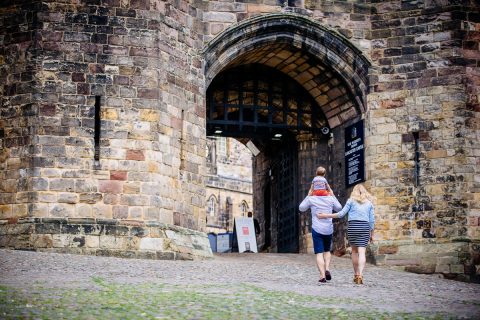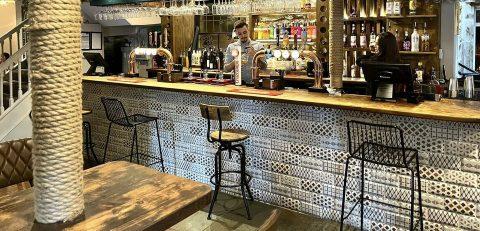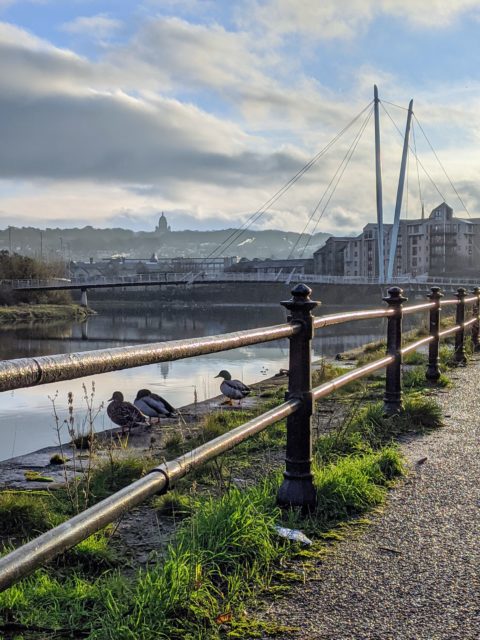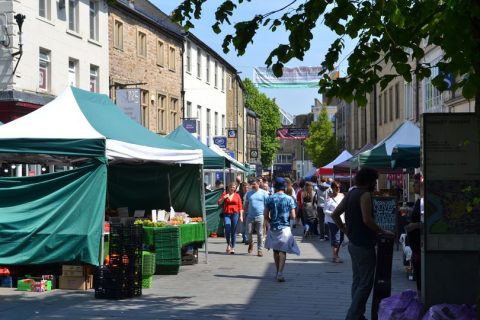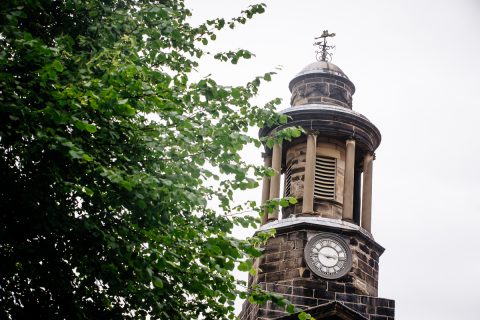Early 7th Century Scabbard Mount
 | The Lancaster area in the early 7th century remains a fascinating mystery, with no surviving documents referring to it. After the withdrawal of Rome in the late 4th and early 5th century various British kingdoms grew to fill the power vacuum left as the Romans withdrew. Lancaster was probably on the fringes of the two or three British kingdoms – Craven and Elmet to the west and the powerful British kingdom of Rheged to the north. Rheged was based around Carlisle and the Eden Valley and Lancaster may have become part of that kingdom in the early 6th century. Items such as this Anglo-Saxon scabbard mount help to provide us with evidence as to who was in the area at the time. Evidence that is extremely thin on the ground for this area in this time period. |
It is likely that Edwin (616-32/3) and his successor, Oswald (634-42) expanded the influence of the Anglo-Saxon Kingdom of Northumbria into the area around Lancaster from the 620s onwards (around 622 Edwin took control of the Isles of Man and Anglesey). However, it is only following the accession of Ecgfrith in 670 that the area that became Lancashire and Cheshire definitely seems to have become part of the Kingdom of Northumbria.
The report for the coroner states that it “belongs to a growing group of pyramidal mounts typically associated with a sword scabbard. Their precise function is uncertain, but they may have helped secure swords in their scabbard by means of a strap running through the transverse bar on the base. Though relatively uncommon as grave finds, they are familiar as stray finds with ever-increasing numbers recorded on the PAS database. Examples decorated with recessed triangles are especially numerous, although often with fewer triangles on each face. They exist in both silver and copper-alloy”. Similar examples are from Cambridgeshire, Wiltshire, Kilham (East Riding of Yorkshire) and Berkshire. Originally finds of similar scabbard mounts were largely based in East Anglia, but the distribution is slowly broadening over time. The Anglo-Saxon mount tends to have the transverse bar, as opposed to Continental examples which are made to be pierced vertically or riveted.
This is therefore an Anglo-Saxon object in an area where the Anglo-Saxons had a minimal presence at best. Over Kellet is near Carnforth, based on the River Keer at the head of Morecambe Bay. It lies on a road that cuts across to the Bay from Kirby Lonsdale, which stands at the head of Lonsdale and on the major route across the Pennines via the Aire Gap. Was this therefore a wealthy traveller? We know that the Anglo-Saxons came over to the west side – Edwin was exiled for a time at Gwynedd in North Wales and Oswald at Dal Riata around Kintyre and Mull. Edwin will have needed a jumping-off point for attacking Man – although this has been assumed to be further north from around Carlisle. This area, on the very southern edge of Rheged, or the western end of Craven/Elmet is unknown, but this object helps to give us a small, but significant insight into understanding who was in the area in the early 600s.


